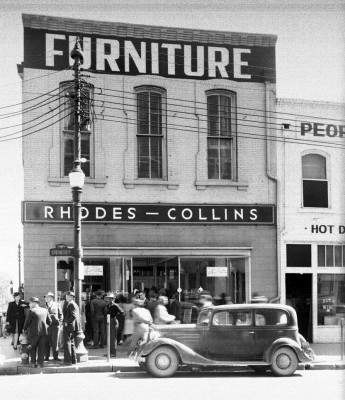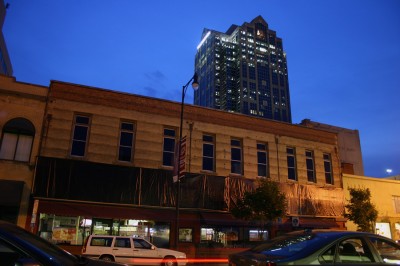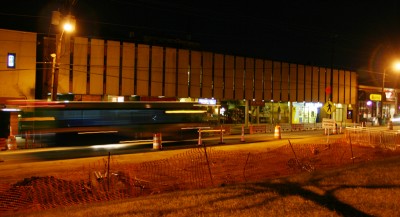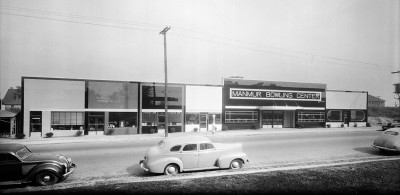Revealing the Future: The Story of Raleigh’s G&S Department Store Building
For more than a decade Empire Properties has been a leader in the revitalization of Downtown Raleigh. The company’s redevelopment and historic preservation efforts have brought back to life many of downtown’s long neglected historic commercial structures.
Most notable among these are the Masonic Temple Building (1907), the Raleigh Times Building (1906), the Raleigh Furniture Building (1914), the East Hargett Street Odd Fellows Building (ca 1881), the Carolina Trust Building (1902) and the former Heilig-Levine Furniture Building (aka Central Hotel, ca 1870).
The Heilig-Levine Building as seen from the G&S Department Store through 19th century window glass.
Empire’s latest venture in historic preservation/adaptive use is the current rehab of the former G&S Department Store on S. Wilmington Street. Read more »
Hillsboro Street’s ManMur Bowling Center: the Geographic Center of North Carolina (?)
I am sure that by now everyone in Raleigh is aware of the Hillsboro St. reconstruction project currently underway along NC State University’s primary business thoroughfare, all the way from Oberlin Rd. out to Brooks Ave. For the past year, cars and pedestrians alike have navigated broken pavement and a clutter of orange and white traffic cones, barrels and barricades, all the while dodging giant earthmoving equipment. However, most people probably are not aware that until the late 1920s that stretch of street was primarily a residential district. In 1939 Hillsboro’s first major commercial building — the ManMur Bowling Center — was erected in the 2500 block.
The ManMur Bowling Center in 1940, when it was new. Notice how sparsely built up the block was then. (Photo courtesy the NC Office of Archives and History, State Archives.)






 Sign up for the Newsletter
Sign up for the Newsletter